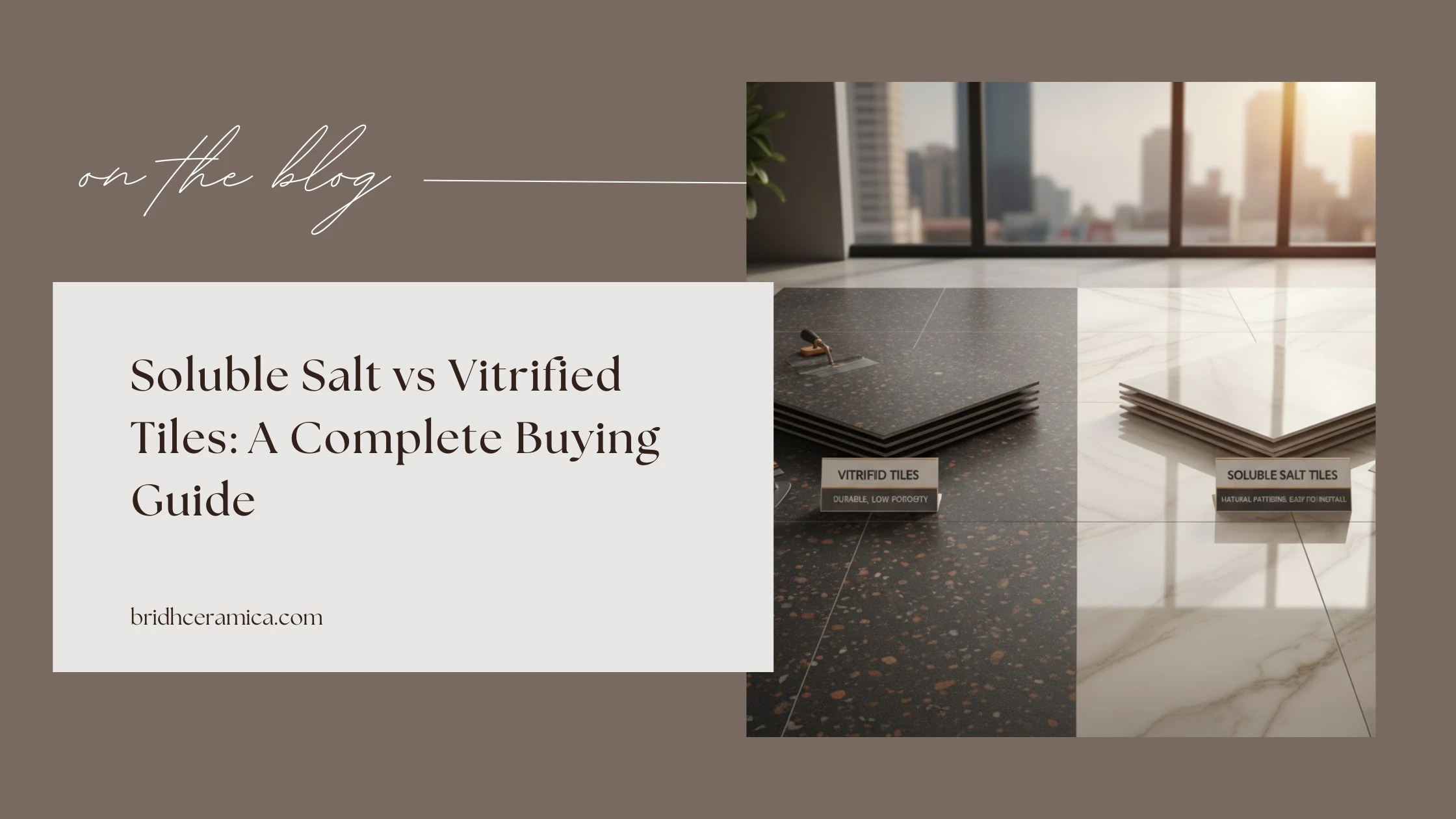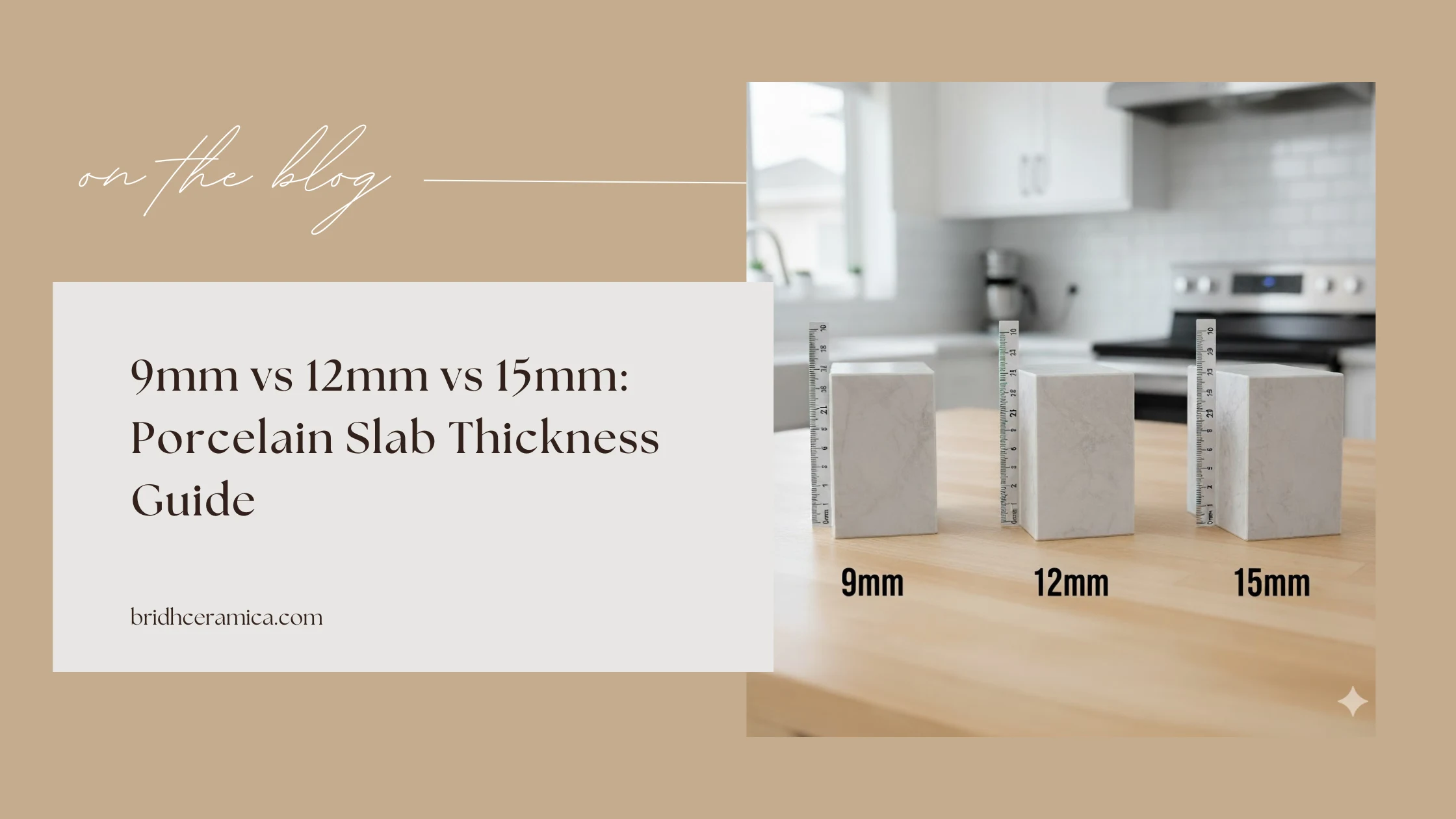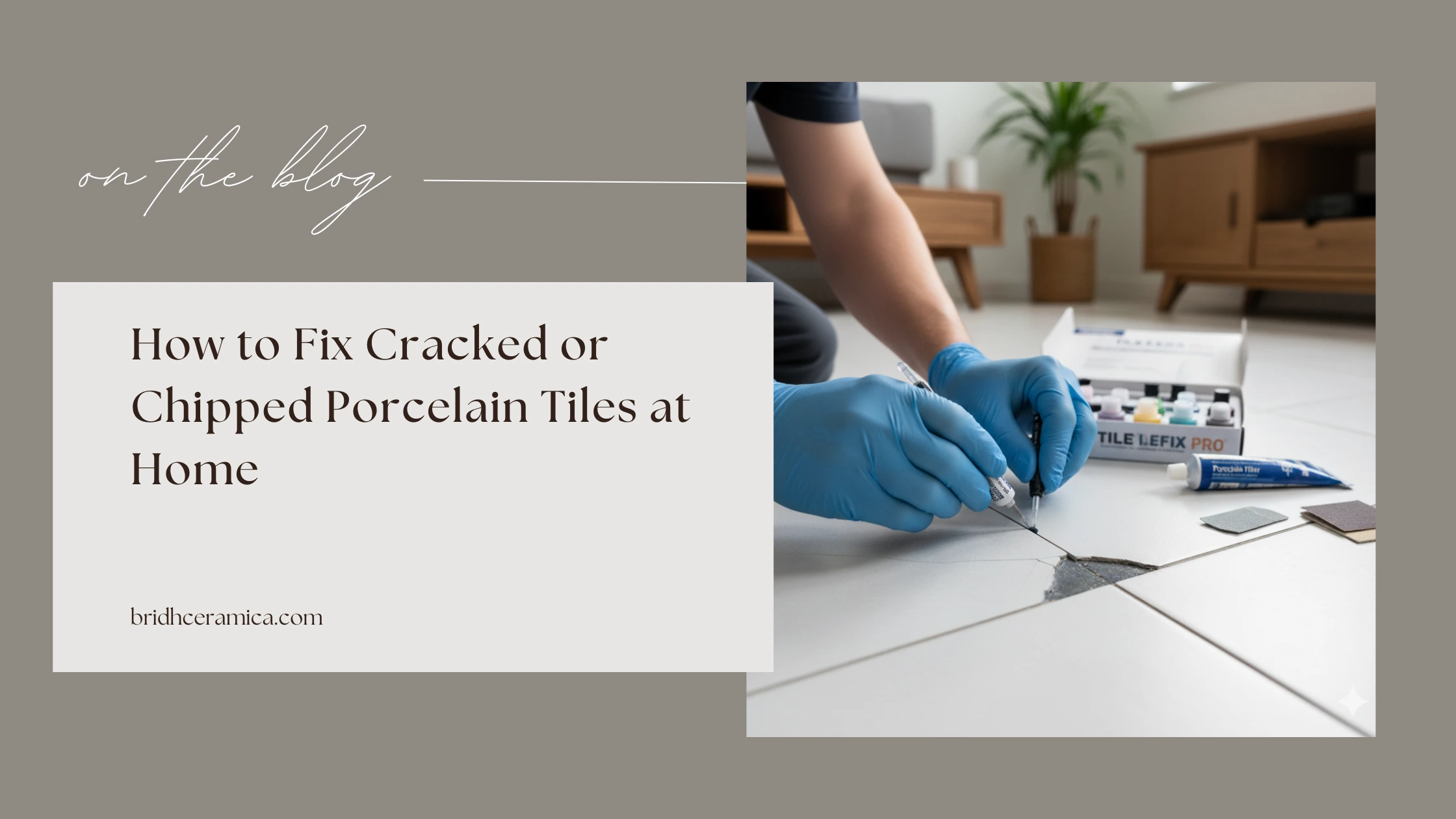Soluble Salt vs Vitrified Tiles: A Complete Buying Guide
Nov 10, 2025Connect With Our Team
The floor is one of the key aspects of any area one might have not only because it determines the aesthetics but also durability/functionality. There are numerous options of modern flooring solutions, and two of the most popular options are vitrified tiles and double charge tiles. Both are powerful, trendy, and popular, but the differences include manufacturing, aesthetic, and use.
Whether you are doing a home renovation, or a business project and you are confused with the type of tile you should use, this blog will give you an overview of the main and most critical differences between vitrified and double charge tiles to make a more educated decision on your part.
What are Vitrified Tiles?
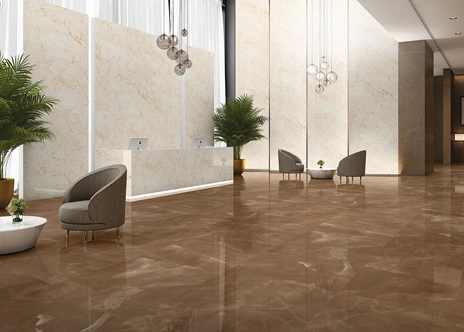
The vitrified tiles are a kind of ceramic tiles that are made through vitrification, by which a combination of clay, silica, quartz, and feldspar are fused to molten-like consistency at high temperatures. The process renders the tiles non porous, durable and water and stain resistant.
There are different types of vitrified tiles available:
-
GVT (Glazed Vitrified Tiles): Glazed Vitrified tiles have an infinite number of designs, texture, and finishes. Ideal with homeowners interested in aesthetic variety.
-
Full Body Vitrified Tiles: The color and design extend to the body of the tile so as to reduce visibility of scratches or chipping. They suit in high traffic spaces.
-
Polished Vitrified Tiles (PVT): The tiles shine due to the polish, which makes it a bit classy on modern house designs.
Applications of Vitrified Tiles:
-
Residential flooring such as living rooms, bedrooms, and kitchens.
-
Office spaces and showrooms for a premium look.
-
Outdoor areas using full body vitrified tiles for durability.
What are Double Charge Tiles?
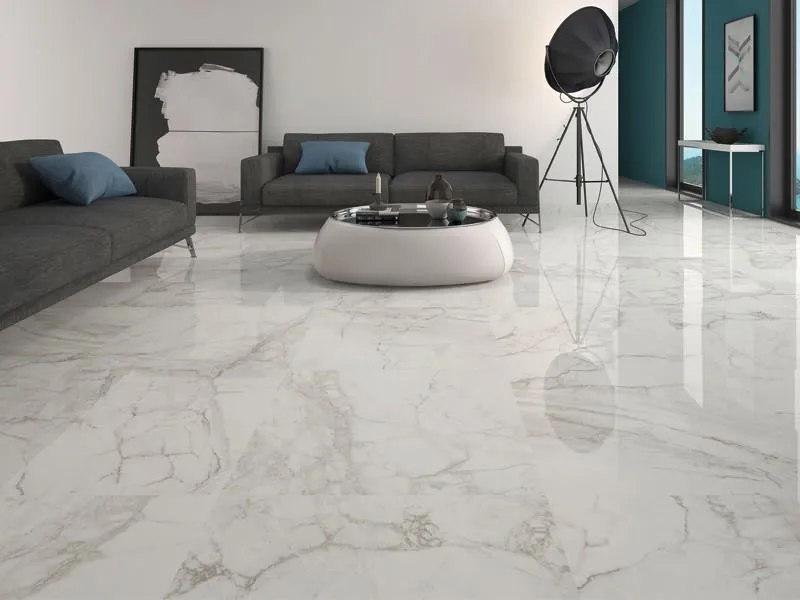
Double charge tiles are produced via a special technology where 2 layers of pigment are taken into the press resulting in a thick design layer on the surface. These two layers of press make its tiles stronger and durable in style design.
They are popular and come in normal sizes, such as 2x2 double charge tiles and 2x4 double charge tiles, and are usable in residential and commercial projects.
Key Features of Double Charge Floor Tiles:
-
Highly durable with strong resistance to wear and tear.
-
The thick design layer (3 - 4 mm) lasts for years without fading.
-
Low maintenance and easy to clean.
-
Available in subtle patterns and shades, though with limited design variety compared to glazed vitrified tiles.
Applications of Double Charge Tiles:
-
Airports, shopping malls, and hotels where heavy footfall is common.
-
Hospitals and schools require strong and easy-to-clean flooring.
-
Homes that prioritize durability over design variety.
Double Charge Tiles vs Vitrified Tiles: Key Differences
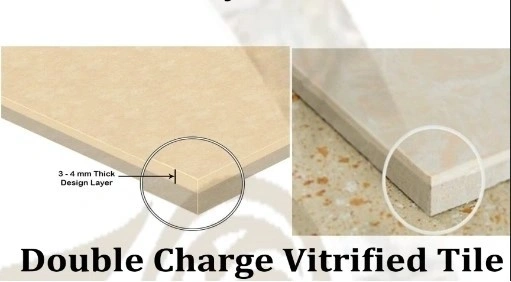
Choosing between vitrified tiles and double charge tiles depends on your project requirements. Let’s break down the main differences:
1. Manufacturing Process
Vitrified Tiles: These are prepared by the process of vitrification providing glazed and polished finishes.
Double Charge Tiles: These are made with a two-layer pigment press resulting in increased thickness and robustness.
2. Durability & Scratch Resistance
Vitrified Tiles: Durable and water, stain, and scratch resistant, but glazed must have their surfaces wear as time progresses.
Double Charge Tiles: A very strong tile, with a very thick upper layer to make it the best in high-traffic commercial areas.
3. Design & Aesthetic Appeal
Vitrified Floor Tiles: These tiles are available in an unlimited variety of designs, colours and textures including a stone or wood-type finish (particularly on GVT tiles).
Double Charge Tiles: These are restricted in the kind of design they can have, most often these are plain basics or marble types but extremely classy in simple interiors.
4. Applications
Vitrified Tile Flooring: This is ideal in homes, offices, and settings that require appearance quality.
Double Charge Floor Tiles: Ideal in commercial and public areas where durability and resistance are the main concern.
5. Cost Factor
Vitrified Tiles: A little more costly depending on the type ( GVT, full body vitrified tiles or polished vitrified tiles).
Double Charge Tiles: Cheaper in the long-term in areas with high usage because of their long life.
6. Maintenance & Longevity
The Vitrified Tiles: Easy to clean, however, the glazed tiles may require some additional maintenance in terms of keeping shine.
Double Charge Tiles: Need very low maintenance and keep their appearance for decades.
Which Tile Should You Choose?
If you’re torn between the two, here’s a simple guide:
For homes with stylish interiors, go for glazed vitrified tiles. Their wide design options can match any theme, modern, rustic, or classic.
For commercial or public spaces with heavy traffic, double charge floor tiles or double coated tiles are more reliable.
For premium projects like luxury villas or showrooms, full body vitrified tiles are a great choice because of their durability and seamless finish.
Conclusion
Both double charge tiles and vitrified tiles are excellent flooring choices, each catering to different needs. If you prioritize design and aesthetics, vitrified floor tiles, especially GVT and polished options are ideal. If your priority is durability and low maintenance, double charge tiles are the way to go.
Ultimately, the right choice depends on your project, whether it’s a home that needs a stylish touch or a commercial space that requires hard-wearing flooring. By weighing the key differences in durability, design, and cost, you can select the tile that perfectly matches your space.
FAQs
1. Are double charge tiles better than vitrified tiles?
Double charge tiles are stronger and more durable for heavy traffic areas, while vitrified tiles offer more design variety and style options.
2. Can vitrified tiles be used for heavy-traffic areas?
Yes, especially full body vitrified tiles, but double charge tiles are generally preferred for extreme footfall.
3. What is the difference between full body vitrified tiles and double charge tiles?
Full body vitrified tiles have uniform color throughout the tile, while double charge tiles have a thick design layer on the surface.
4. Which is cheaper: vitrified tiles or double charge tiles?
Double charge tiles are generally more affordable and last longer in commercial spaces.
5. Do 2x2 double charge tiles last longer than GVT tiles?
Yes, 2x2 and 2x4 double charge tiles are more durable in the long term, whereas GVT tiles are chosen mainly for aesthetics.
Whatsapp Chatx
Hi! Click one of our representatives below to chat on WhatsApp or send us email to dhaval@bridhceramica.com

|
************** +91 97023 82809 |
 TILES VIEW
TILES VIEW
